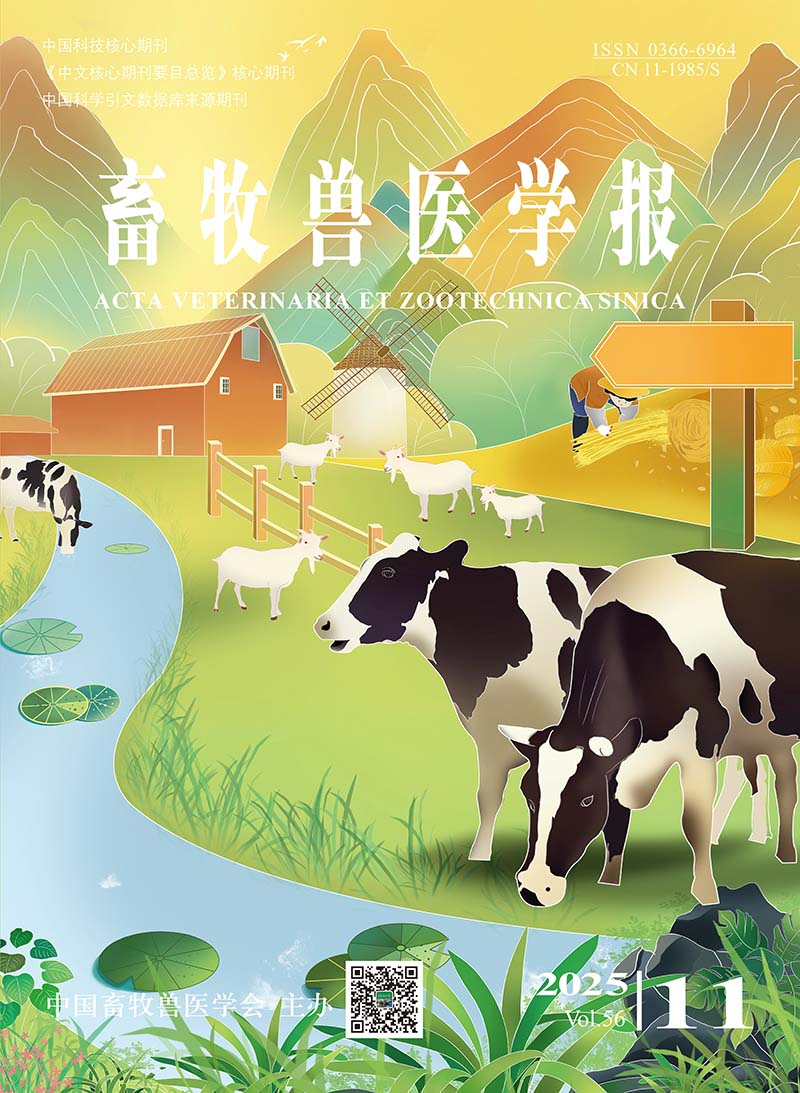-
Establishment of Acute Stress Model and Screening of Diagnostic Markers in Cats
- ZHANG Haiyang, ZHU Qiuxiang, GAO Zhicheng, JIA Kun, WANG Jingyu, JI Jinzhao, LIANG Wuying, MO Ruiwen, LI Shoujun
-
2023, 54(3):
1249-1260.
doi:10.11843/j.issn.0366-6964.2023.03.036
-
 Abstract
(
354 )
Abstract
(
354 )
 HTML( )
HTML( )
 PDF (1804KB)
(
1514
)
PDF (1804KB)
(
1514
)
-
References |
Related Articles |
Metrics
The purpose of this study was to establish a cat acute stress model, screen diagnostic markers, and improve the definition standard of cat acute stress. Eighteen cats were randomly divided into control group, stress group A and stress group B, with six cats in each group. Physiological indexes of each group were measured, cat stress score (CSS) was assessed, blood was collected for routine blood and blood biochemical analysis; concentration of serum inflammatory factors, hormones, 5-hydroxytryptamine (5-HT) and heat shock protein-70 (HSP-70) were detected by ELISA; serum oxidative stress indexes were detected by micro-assay method. The results showed that compared with the control group, the body temperature, respiration rate, CSS, the blood urea nitrogen (BUN) content, the creatine kinase (CK) activity, the concentration of IL-1β, TNF-α, corticotropin releasing hormone (CRH), adrenocorticotropic hormone (ACTH), cortisol (COR), epinephrine (EPI) and 5-HT were significantly increased in stress group A (P<0.05), the red blood cell (RBC) number, the concentration of hemoglobin (HGB) and IL-10, the activity of aspartic transaminase (AST) and alanine transaminase (ALT),and the total cholesterol (TC) content were significantly decreased in stress group A (P<0.05), the heart rate, the number of white blood cells (WBC), lymphocytes (LYM) and neutrophil (NEUT), the content of glucose (GLU), total protein (TP), albumin (ALB), creatinine (CRE), triglyceride (TG) and malondialdehyde (MDA), the activity of amylase (AMY), superoxide dismutase (SOD) and catalase (CAT), and the HSP-70 concentration had no significant changes in stress group A (P>0.05). Compared with the control group, the body temperature, respiration rate, CSS, the number of WBC, NEUT and RBC, the content of GLU, BUN and TG, the activity of CK, AST, SOD and CAT, the concentration of HGB, IL-1β, TNF-α, CRH, ACTH, EPI, HSP-70 and 5-HT were significantly increased in stress group B (P<0.05), the concentration of IL-10 and COR were significantly decreased in stress group B (P<0.05), the heart rate, the LYM number, the activity of ALT and AMY, the content of TP, ALB, CRE, TC and MDA had no significant changes in stress group B (P>0.05). The results suggest that the compound stress and restraint stress designed in this study can successfully establish a cat acute stress model, and screened out CRH, ACTH and CSS which can improve the definition standard of cat acute stress.






